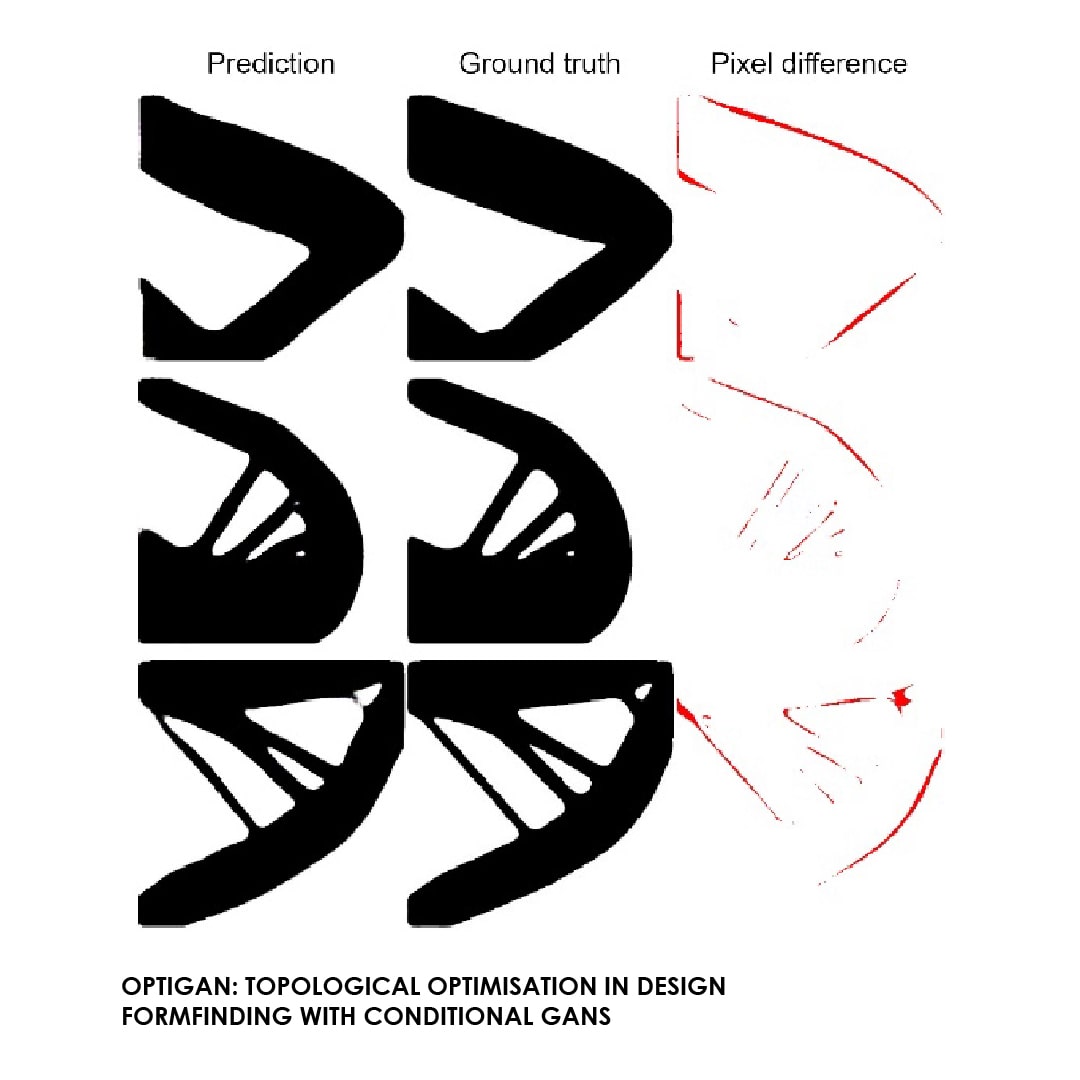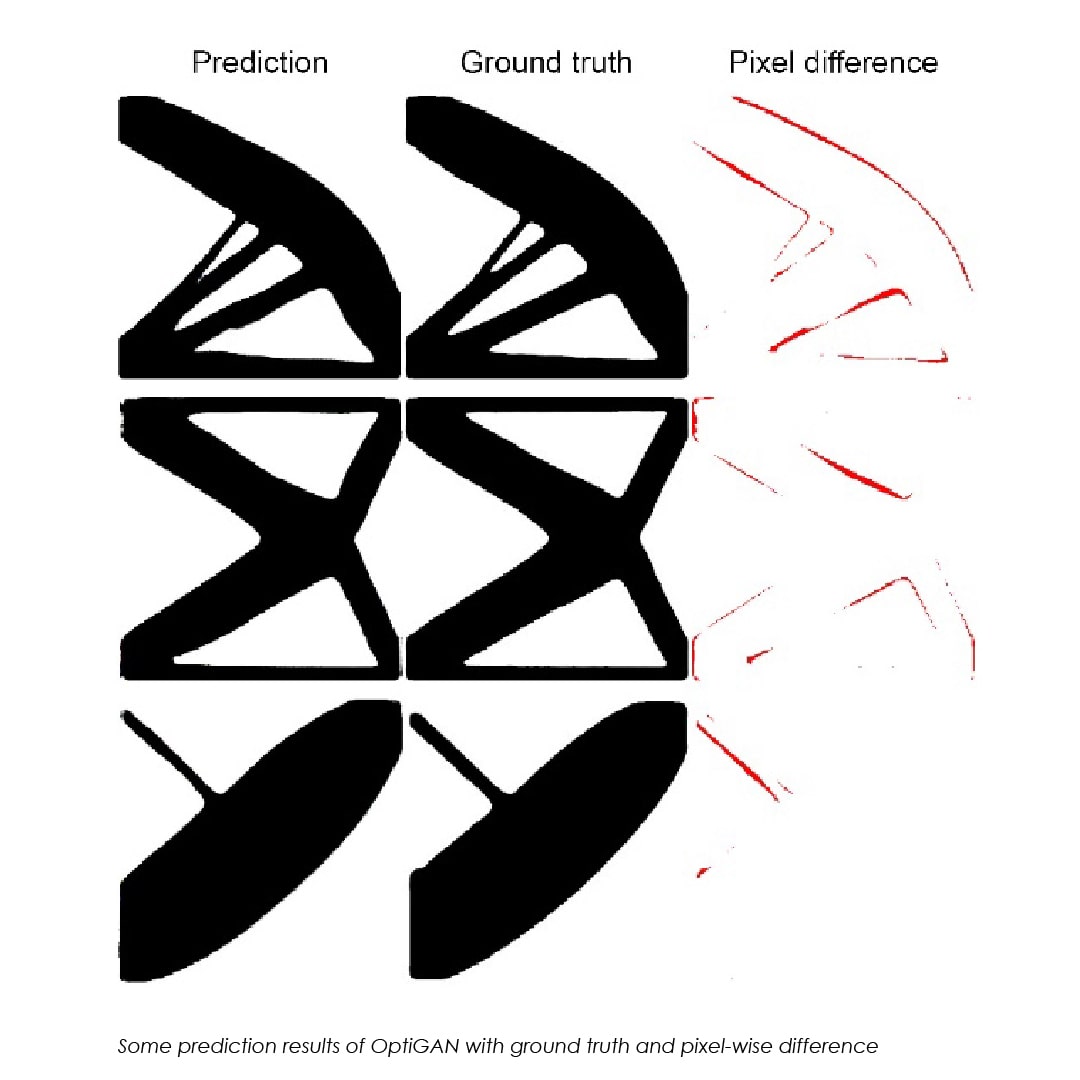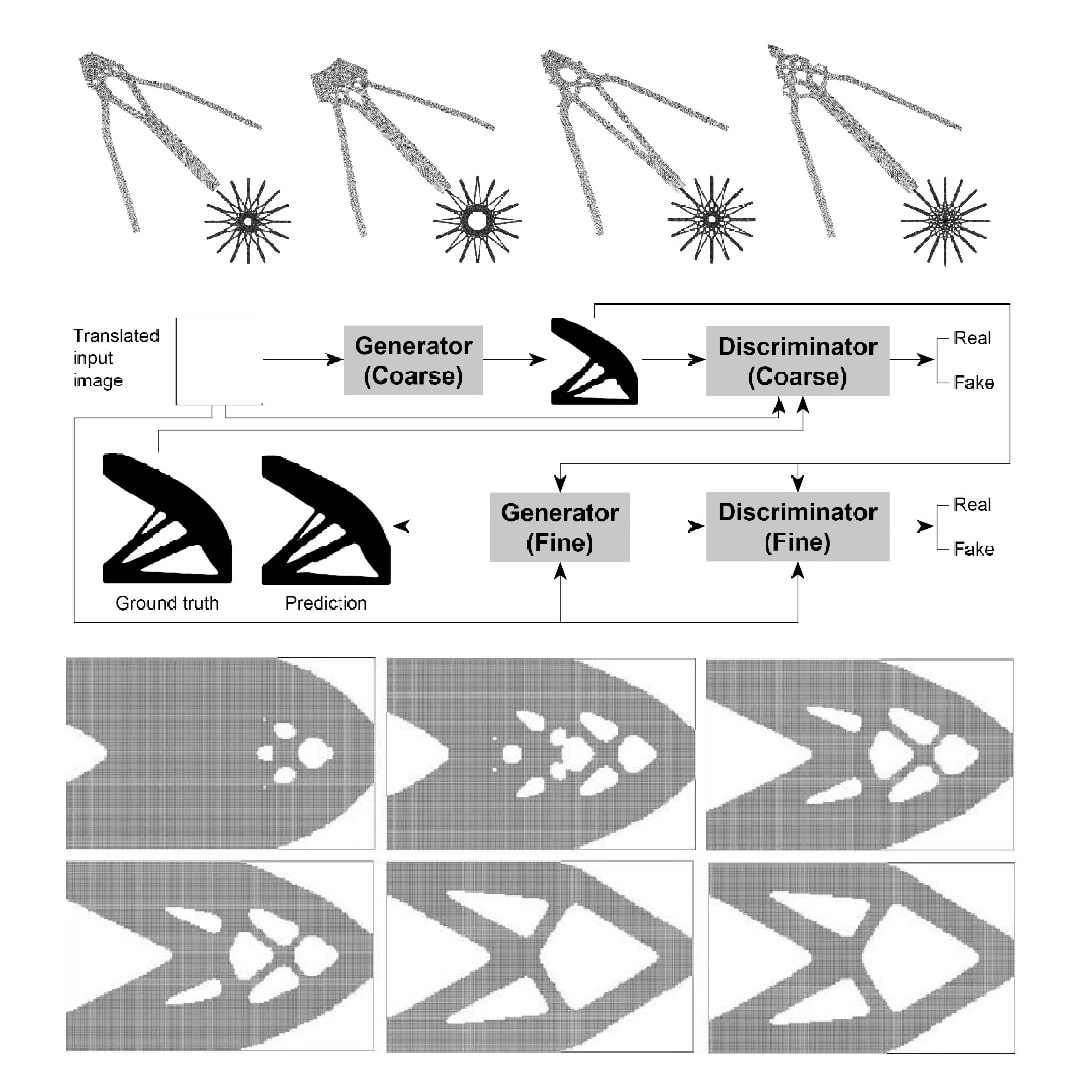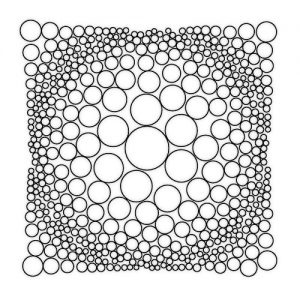Topological Optimisation
OPTIGAN: TOPOLOGICAL OPTIMISATION IN DESIGN FORMFINDING WITH CONDITIONAL GANS
XUYOU YANG1, DING WEN BAO2, XIN YAN3 and YUCHENG ZHAO4
11DesignLab
2School of Architecture and Urban Design & Centre for Innovative Structures and Materials, RMIT University
3Tsinghua University
4ByteDance
With the rapid development of computers and technology in the 20th century, the topological optimisation (TO) method has spread worldwide in various fields.
This novel structural optimisation approach has been applied in many disciplines, including architectural form-finding. Especially Bi-directional Evolutionary Structural Optimisation (BESO), which was proposed in the 1990s, is widely used by thousands of engineers and architects worldwide to design innovative and iconic buildings.
To integrate topological optimisation with artificial intelligence (AI) algorithms and to leverage its power to improve the diversity and efficiency of the BESO topological optimisation method, this research explores a non-iterative approach to accelerate the topology optimisation process of structures in architectural form-finding via conditional generative adversarial networks (GANs), which is named as OptiGAN.
Trained with topological optimisation results generated through Ameba software, OptiGAN is able to predict a wide range of optimised architectural and structural designs under defined conditions.
 Structural optimisations aim to achieve the best structural performance while meeting the requirement of various constraints. Over the past three decades, high-speed computers and rapid improvements in algorithms have been used to develop better structural optimisation solutions by a number of engineering researchers.
Structural optimisations aim to achieve the best structural performance while meeting the requirement of various constraints. Over the past three decades, high-speed computers and rapid improvements in algorithms have been used to develop better structural optimisation solutions by a number of engineering researchers.
 Topology optimisation is one of the most popular optimal structural design methods for discrete structures, such as trusses and frames.
Topology optimisation is one of the most popular optimal structural design methods for discrete structures, such as trusses and frames.
It is developed to search for the optimal spatial order and connectivity of the bars. Topology optimisation of continuum structures is to find optimal designs by determining cavities’ best locations and geometries in the design domains.
 This research develops OptiGAN, a non-iterative method to accelerate the topology optimisation process of structures in architectural form-finding via conditional generative adversarial networks with high accuracy.
This research develops OptiGAN, a non-iterative method to accelerate the topology optimisation process of structures in architectural form-finding via conditional generative adversarial networks with high accuracy.
It demonstrates the process of integrating topology optimisation and generative adversarial networks to establish an artificial intelligence (AI) based structural optimisation technique.
This new methodology holds great potential for practical application in architecture and engineering fields. It increases the diversity of outcome of the topology optimisation generative design such as the application of shell.




























Comments